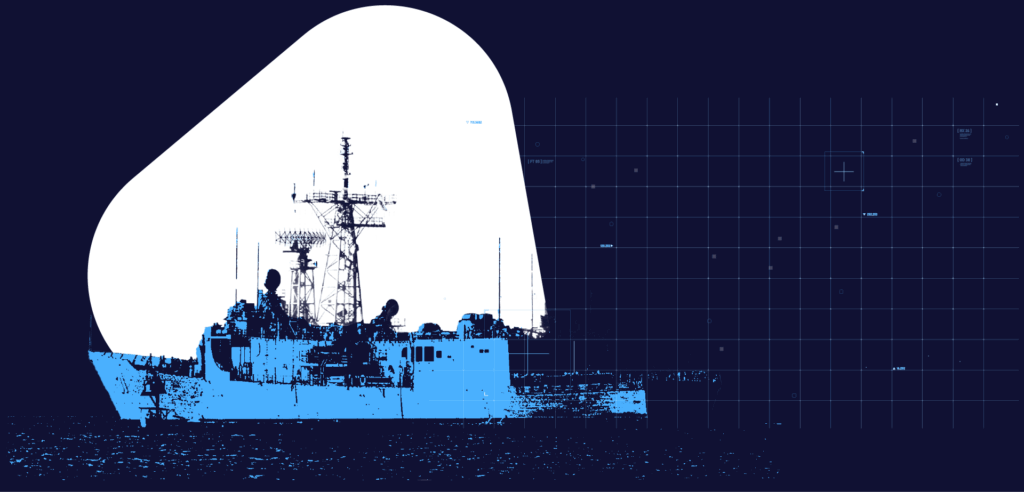Remembering the USS Stark: Honoring the Fallen, Advancing the Mission

On May 17, 1987, the USS Stark (FFG-31), a U.S. Navy guided-missile frigate, was patrolling the Persian Gulf when it was struck by two Exocet missiles fired from an Iraqi aircraft. The attack claimed the lives of 37 American sailors and wounded 21 others. It remains one of the most devastating peacetime attacks on a U.S. Navy vessel, leaving behind hard lessons in readiness, detection, and vulnerability—lessons that still resonate in today’s evolving battlespace.
At Clarity, we remember and honor those who gave their lives aboard the USS Stark. Their sacrifice is a solemn reminder of the constant threats faced by those who serve. It underscores the critical need to evolve our national defense posture in all domains: from the digital battlespace to data infrastructure and mission systems.
A Wake-Up Call
The Stark incident unfolded in mere minutes. The ship’s radar failed to detect the threat in time, allowing the missiles to strike without warning. At a time when regional conflicts and asymmetric threats were on the rise, the incident highlighted a painful truth: even the most advanced military assets can be caught off guard by unexpected, unconventional tactics.
Today’s threats look different–but the stakes are just as high. From cyberspace to software systems to data pipelines, the modern mission demands vigilance, interoperability, and speed. Failure to detect, assess, and act–anywhere in the chain–can carry catastrophic consequences.
Modern Warfare is Digital
In 1987, the weapons were missiles and metal. Today, they are malware, disinformation, misconfigured systems, and inaccessible data. Our adversaries know that a breach in a single system or device can ripple across networks, compromise missions, and expose sensitive national security data.
The Clarity mission is to prevent that from happening.
- We achieve cyber dominance by exposing and neutralizing digital vulnerabilities before they can be exploited.
- We transform systems by delivering resilient, intuitive, and modern software solutions that connect warfighters to the information they need, when they need it.
- We empower data–ensuring organizations can operate at the scale of their mission, turning raw data into trusted, actionable intelligence.
From securing classified networks to building mission-ready interfaces and managing the speed and volume of data across domains, our work is built to meet the demands of national defense.
Supporting Those Who Serve
Clarity stands with our servicemembers, both past and present. We honor their courage not just with words, but through action. By arming our military and federal partners with the tools, intelligence, and platforms they need to outpace evolving threats, we contribute directly to operational security, resilience, and success.
Our teams include veterans, engineers, threat analysts, system architects, and data experts—all united by a shared purpose: protect the mission, protect the warfighter. The memory of the USS Stark drives our resolve. It reminds us that every gap in defense–technical or human–has real consequences. It reminds us why we build with care, test with rigor, and design with clarity.
A Legacy that Drives Us Forward
The story of the USS Stark is more than a memorial. It is a call to action. Every unchecked vulnerability, every legacy system that slows decision-making, and every piece of siloed data carries the risk of another tragedy. At Clarity, we believe mission dominance is earned through relentless innovation, secure and scalable systems, and data that works for people–not against them. We reflect today not only on what was lost, but on what we must protect. The Stark was struck by surprise. We strive to ensure our nation never is again.
Clarity proudly stands with our warfighters, veterans, and allies. We are committed to building a safer, smarter, and more secure tomorrow—one where threats are seen before they strike, and missions succeed because the digital front is fortified.
Prevention is national security. Let’s never forget why.
The Clarity Writers team is made up of storytellers from diverse backgrounds—ranging from technologists turned writers to lifelong communicators. Our contributors include full-time employees, part-time collaborators, and trusted contractors, each bringing their unique voice and perspective to the Clarity mission. Together, we share stories that reflect who we are, what we do, and why it matters.

